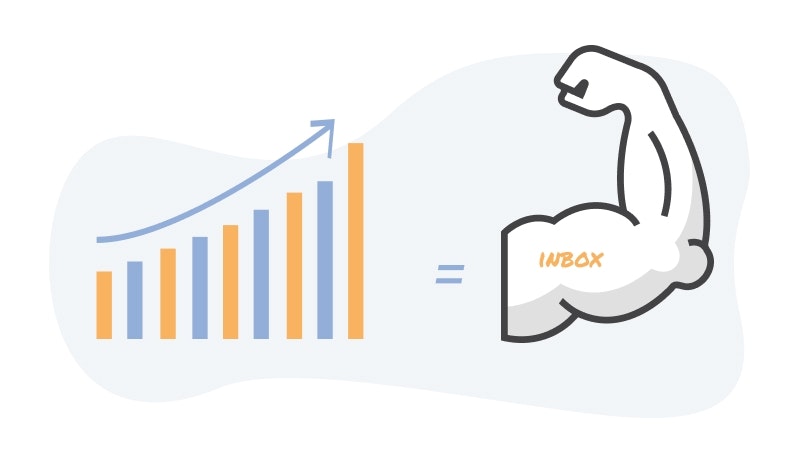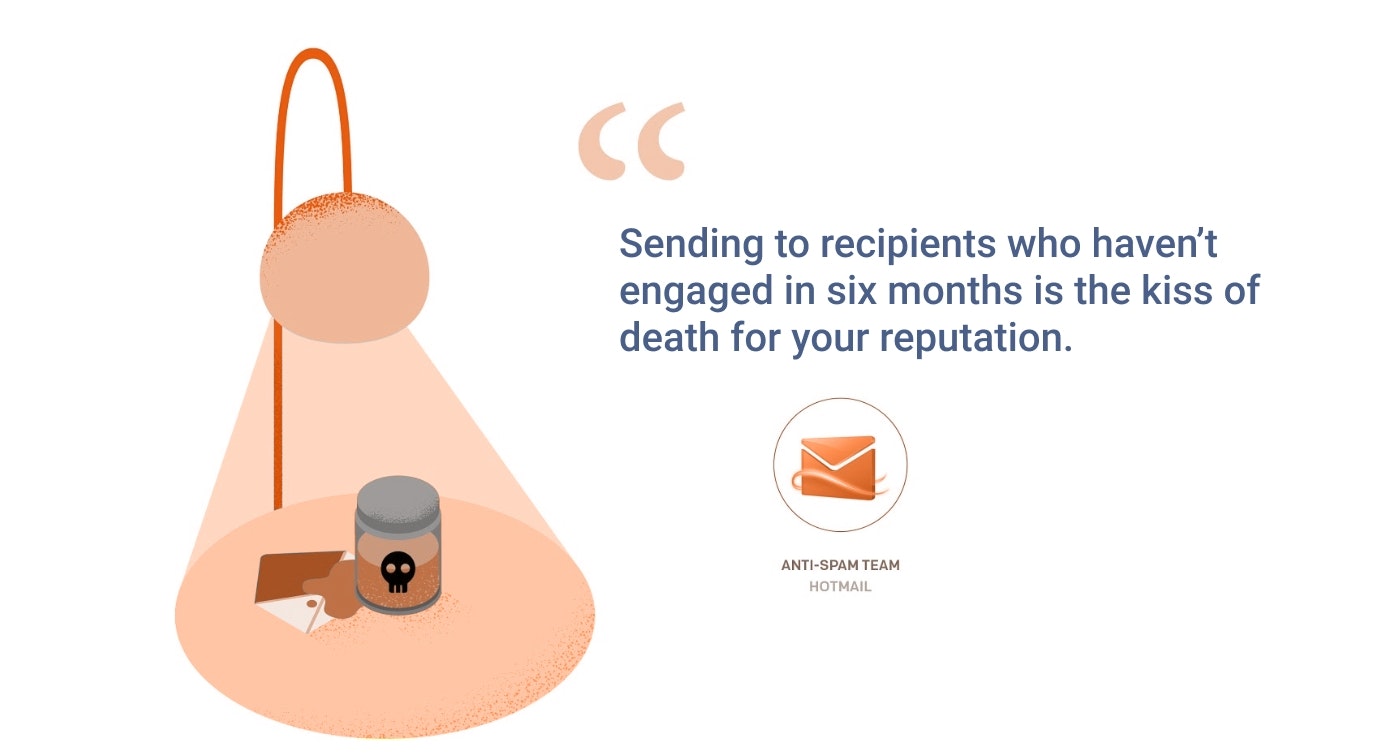Why Email Delivery is One Tough Mudder
by Erin Lauzon · Updated Sep 07, 2021
Crossing the finish line (and landing in the inbox) has never felt so good.

A Tough Mudder 5K isn’t just any 5K—it’s one with daunting obstacles, lots of yelling, loud music, and, of course, a lot of mud. Believe it or not, this very messy and demanding race is comparable to understanding email deliverability and its many challenges. Internet Service Providers (or ISPs, e.g. Gmail, Yahoo!, Hotmail, AOL, etc.), like Tough Mudder “obstacles,” have, in recent years, become even tougher with their spam filtering algorithms—so adhering to email deliverability best practices is crucial for a successful email campaign.

Tough Mudder
What is email deliverability?
Simply put, successful email deliverability is landing in the recipients' inbox in a way that improves the chance of the recipient seeing and engaging with your message. No matter how great and incentivized your subject line is, recipients can’t open your email if it’s filtered to spam. Below are just a few (of many) email deliverability best practices—and how they relate to running a very challenging 5K—to keep in mind.
I. Warm Up Your Domain (Start Training Before the Race)
If you’re not an active runner—or if you used to be a runner back in the day, but it’s been a while—you’re going to want to start training a few weeks before the race. You can’t just expect to wake up that morning and run the whole 5K, plus all its wild obstacles—you could really injure yourself! This is similar to when you want to start sending emails from a new domain, or when you’re preparing to send to a higher volume than usual. (For instance: think of high-volume senior search campaigns launching in August, or sophomore/junior campaigns launching in February. The domain isn’t used to sending that high volume yet.) By sending to a high volume all at once, right from the start, you could really “injure” your sender reputation. The domain “warm-up” process, like training before the race, involves starting with a small, engaged volume and gradually increasing sending volume over a period of a few weeks (typically three to four) while maintaining high open rates (25-30% during the warm-up period is ideal).

II. Monitor Open Rates and Adjust Sending Population (Listen to Your Body)
During the race, be sure to listen to your body and adjust to the different obstacles—in this case, various ISPs. Let’s say that, during the Hotmail obstacle, you hurt your shoulder, or you slip off the Gmail obstacle and twist your ankle. You should evaluate your circumstances before resuming. Continuing the race at full speed could make your condition much worse and cause long-term damage to your body. You’ll want to adjust by decreasing your speed, and by being wary of other obstacles that may aggravate your condition.
If you don’t monitor and adjust sending population over time, email deliverability and performance issues will arise. Email communication is a two-way street: listen to how your recipients are engaging. If a search student shows no engagement in the last 90 days (after receiving an email about once a week), consider removing the student from your sending segment. Sending to non-engaged users will show a low engagement rate with a high volume, a characteristic of spammers. As a result, ISPs are more likely to flag your messages as spam, damaging your email deliverability and sender reputation.
Lastly, review your sending frequency and cadence. Monitor both your positive and negative engagement metrics. If you see a rise in your unsubscribe or spam rates, consider sending less frequently to avoid burnout. It's common to increase frequency around deadline dates and events, but resume your normal cadence once those dates have passed.

III. Infrastructure and Authentications (Are You Healthy Enough to Run?)
Before attempting a tough 5K, you want to be sure you’re physically and mentally well enough to participate. Just like having your email infrastructure set up properly from the start, you want to identify any potential issues and give yourself the best chance of landing in the inbox (or, in our analogy, completing the race). During your warm-up/training period, you might want to start eating healthier, lose a few pounds, and maybe even get an “okay” from your doctor should you have any underlying conditions.
Something that we don’t usually think about before hitting “send” is how the infrastructure and sender authentications are set up. Like your heart, lungs, and mindset, these “internal” factors are a major puzzle piece in email deliverability. Authentications such as SPF, DKIM, and DMARC serve as validation, or proof, that you can send on behalf of your domain and IP addresses. Should these authentication records be set up incorrectly, ISPs will think you’re sending spoof or phishing emails, impacting your inbox placement. Think of the authentication records as your doctor’s note—it’s giving you the clear to run the race!
Who knew that participating in a Tough Mudder 5K and understanding email deliverability both require a similar mindset? The only big difference is that—ideally—you don’t have to worry about your clothes getting dirty when sending emails.
With Element451 on your team, we can overcome challenging obstacles together!

About Element451
Boost enrollment, improve engagement, and support students with an AI workforce built for higher ed. Element451 makes personalization scalable and success repeatable.
Categories
New Blog Posts

The Definitive Guide
AI in Higher Education
Bridge the gap between the latest tech advancements and your institution's success.
Useful Links

Talk With Us
Element451 is the only AI Workforce Platform for higher education. Our friendly experts are here to help you explore how Element451 can improve outcomes for your school.
Get a Demo






